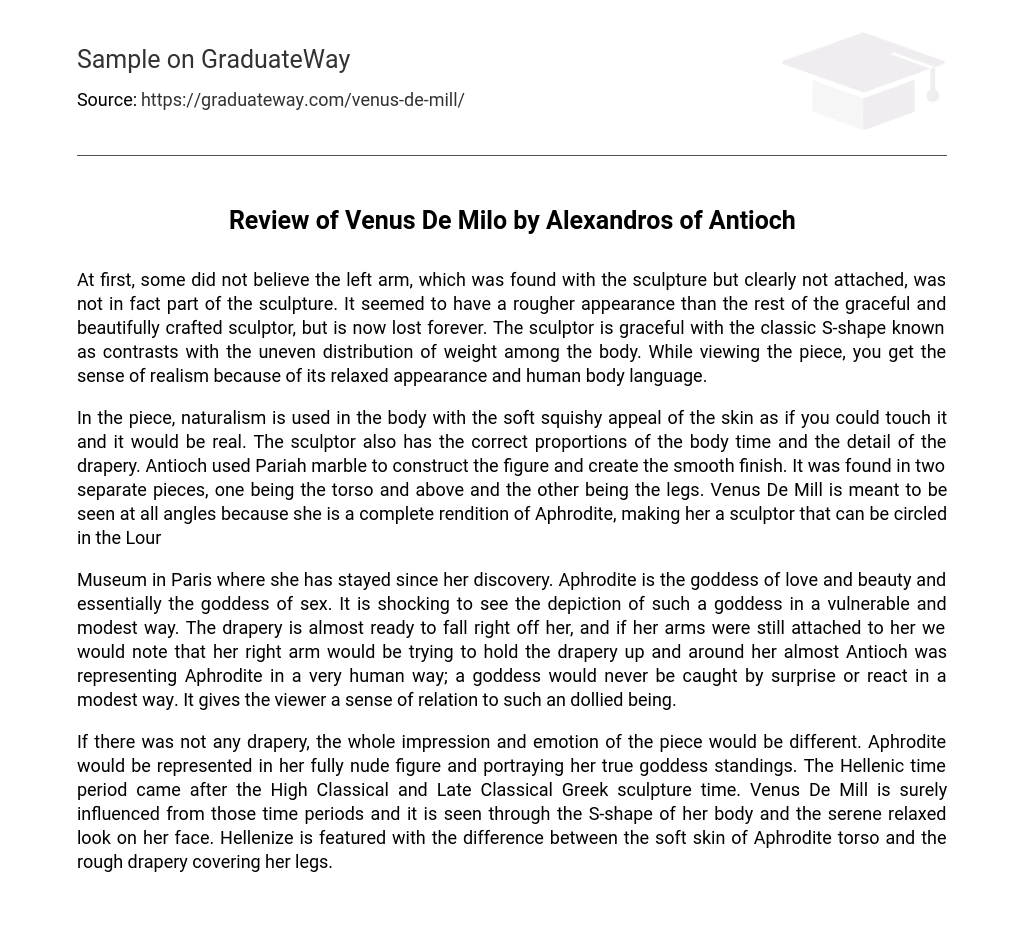Originally, there were skeptics who questioned whether the left arm, discovered alongside the sculpture but evidently not connected to it, was indeed a genuine part of the artwork. The arm appeared rougher in texture compared to the rest of the sculpture, which was skillfully crafted and exuded grace. Unfortunately, the arm has now been permanently lost. The sculpture itself embodies elegance, showcasing the classic S-shape that contrasts with the body’s uneven distribution of weight. While observing this artwork, one cannot help but appreciate its realism due to its relaxed appearance and indicative human body language.
The sculptor’s use of naturalism is evident in the lifelike quality of the skin, inviting the viewer to imagine actually touching it. Additionally, the artist accurately depicted the proportions of the body and meticulously crafted the drapery. The figure of Venus De Mill was constructed using Pariah marble, which lends itself to a smooth finish. The sculpture was discovered in two separate pieces: one consisting of the torso and upper body, and the other comprised of the legs. Being a complete representation of Aphrodite, Venus De Mill is meant to be admired from all angles, encouraging viewers to circle around her in the Lour.
The Museum in Paris houses Aphrodite, who has resided there since her discovery. Aphrodite, revered as the goddess of love, beauty, and sex, is depicted in a surprising and modest manner. The drapery surrounding her appears to be on the verge of slipping off. If her arms were still intact, we would observe that her right arm would be supporting and encircling the drapery. Antioch’s portrayal of Aphrodite grants her a human touch, which is unusual considering goddesses are typically portrayed as composed and immodest. This representation fosters a sense of connection between the viewer and this divine entity.
If there were no drapery, the entire impression and emotion of the piece would be altered. Aphrodite would be depicted in her completely naked form, displaying her divine stature. The Hellenic era followed the periods of High Classical and Late Classical Greek sculpture. Venus De Mill clearly draws influence from these time periods, as evident by the S-shaped curvature of her body and the tranquil expression on her face. The Hellenistic touch is exemplified by the contrast between Aphrodite’s smooth torso and the coarse drapery that conceals her legs.





